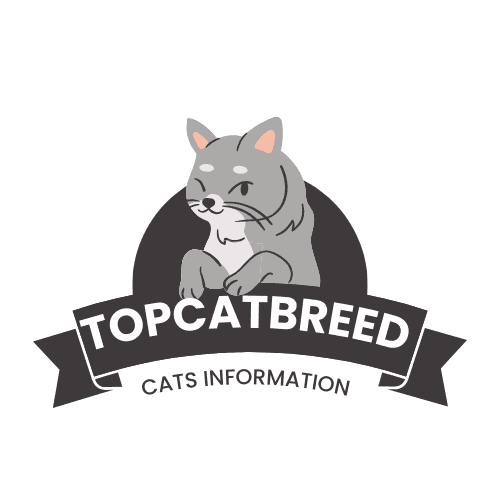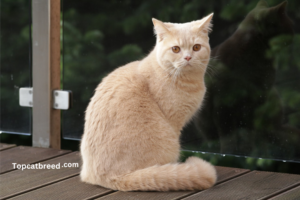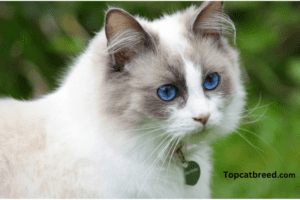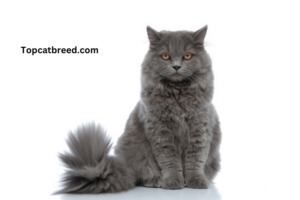These most aggressive cat breeds have distinct characteristics and histories that make them stand out. Some of them are more playful, while others can be a bit more stubborn. They are known for their feisty personalities. As you consider adopting a cat, it’s important to know what you’re getting into. Using the keyword “most aggressive cat breeds” helps you find information about these special feline friends. These cat breeds are also known to nip and bite, which can be attributed to a variety of factors. Being irritable, overly excited, fearful, demanding more attention, or sensitive to human touch are all examples.
This list will assist you in determining which cat breeds are the most aggressive and which to avoid if you do not want a sassy pet. Cats can be extremely cuddly and adorable, but some breeds can be a little feisty. This independent and rebellious side is adorable to some owners, but too much for others .One of the most prevalent problems with domesticated cats is feline aggression, and many people don’t know how to handle it.
8 MOST AGGRESSIVE CAT BREEDS
Discover the world of the fiercest cat breeds; these lively creatures will add some spice to your house. We’ll discuss the top eight breeds of aggressive cats in this essay. They are a fascinating option for cat owners due to their unique personalities and traits. These breeds will make cat ownership an incredible experience, regardless of your level of experience. Come along on a captivating journey to learn what makes these cats special.
Also Read.Top 8 most dangerous cat breeds in the world
1. Siamese Cats
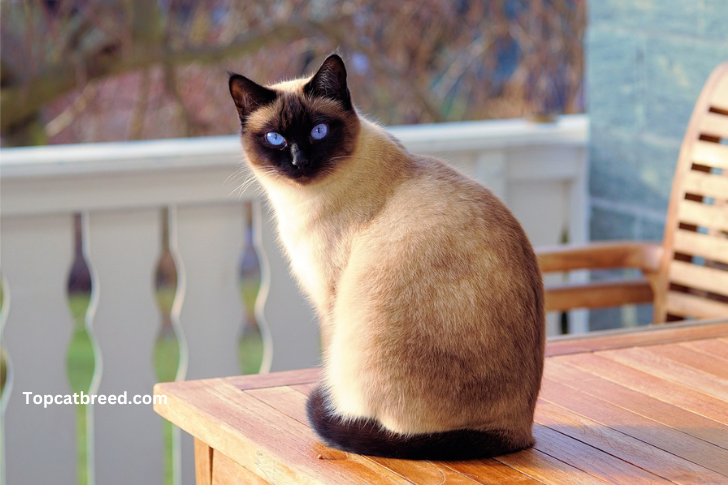
The Siamese cat, with its rich history rooted in Siam (now Thailand), is a breed of unique distinction. In the early 1900s, Siamese cats made a captivating entrance into the Western world, rapidly winning the hearts of cat enthusiast’s .Siamese cats are known for their striking appearance, vocal nature, and a degree of assertiveness, sometimes perceived as aggression. While they are not naturally aggressive, they may be rather demanding and territorial over their favorite locations or toys. These medium-sized cats normally weigh 6 to 14 pounds and have a life expectancy of 15 to 20 years.
Siamese cats’ boldness is typically a result of their strong personalities and craving for attention. They are highly intelligent and thrive on human interaction. When they feel their needs for playtime, affection, or territory are not met, they may become more vocal and assertive.
It’s essential for Siamese cat owners to engage them in regular play, provide stimulating toys, and create a structured environment to prevent territorial issues from developing. Proper socialization and providing ample outlets for their energy can help channel their assertive tendencies in a positive direction. Understanding and responding to their vocal cues is key to maintaining a harmonious relationship with this breed.
2-Bengal Cats
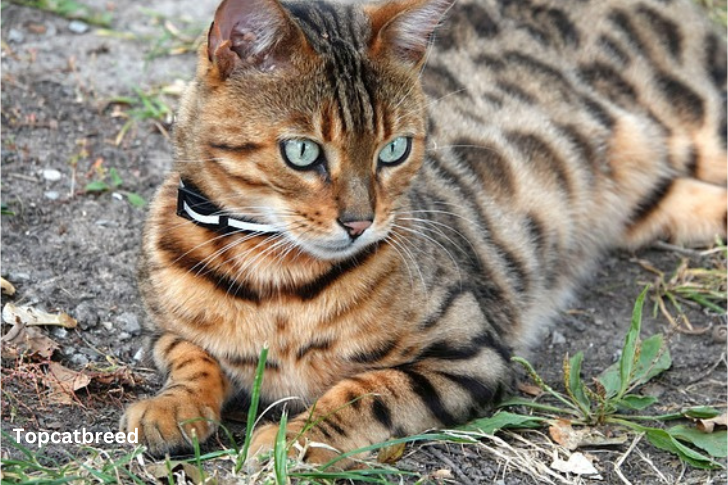
Bengal cats were developed in the 1960s by breeding an Asian leopard cat with domestic cats. They feature characteristic leopard-like spots. Bengal cats have a genuinely unique and exotic appearance, distinguished by their forceful and territorial personality, which can be misinterpreted as violence at times. These medium to large-sized cats have an average lifespan of 12 to 16 years, with males measuring 10 to 15 pounds and females somewhat smaller. The assertiveness of Bengal cats is deeply rooted in their wild ancestry.
Their leopard-like spotted coat pattern reflects their lineage, and this can lead to territorial behavior, including marking and protecting their territory. They are highly intelligent and have a strong hunting instinct, which can manifest as assertive behavior when they feel their environment needs guarding. To manage their territorial tendencies and reduce aggression, providing ample mental and physical stimulation is crucial.
Puzzle toys, interactive play sessions, and opportunities for hunting-like activities can help keep them engaged and content. A well-structured and enriched environment will help satisfy their need for mental and physical challenges while minimizing aggressive behaviors. Understanding their unique traits and respecting their need for space and stimulation is essential for a harmonious relationship with Bengal cats.
3. Maine Coon Cats
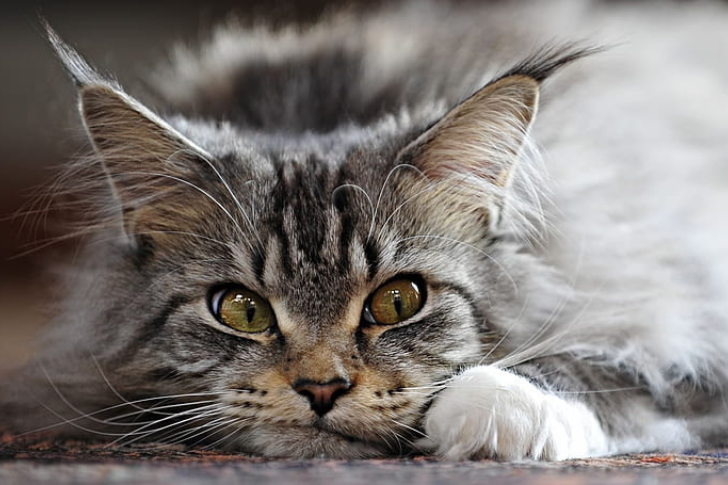
The Maine Coon, hailing from the rugged landscapes of North America, is often considered one of the oldest domestic cat breeds. Its history is a blend of myth and reality, with legends suggesting a connection to Marie Antoinette’s cats and seafaring origins. Renowned for their large size, tufted ears, and bushy tails, Maine Coons embody a captivating history that intertwines with the fabric of American folklore .Maine Coon cats are known for their impressive size and friendly demeanor. These gentle giants can weigh between 13 to 18 pounds or more, with females being somewhat smaller. They often have a lifespan of 12 to 15 years. While they are not aggressive by nature, their territorial behavior may manifest due to their protective instincts
Maine Coon cats are highly sociable and form strong bonds with their human families. They might exhibit assertiveness when they perceive a threat to their loved ones or their environment. This behavior can sometimes be misunderstood as aggression. Maintaining a harmonious relationship with a Maine Coon involves providing them with a secure and enriched environment, allowing them to exercise their territorial instincts without causing harm.
Ensuring that they have plenty of space and opportunities for exploration can help manage their territorial tendencies. Maine Coon cats also benefit from interactive play sessions and puzzle toys, which keep their minds engaged and alleviate any potential assertive behaviors.
4. Scottish Fold Cats
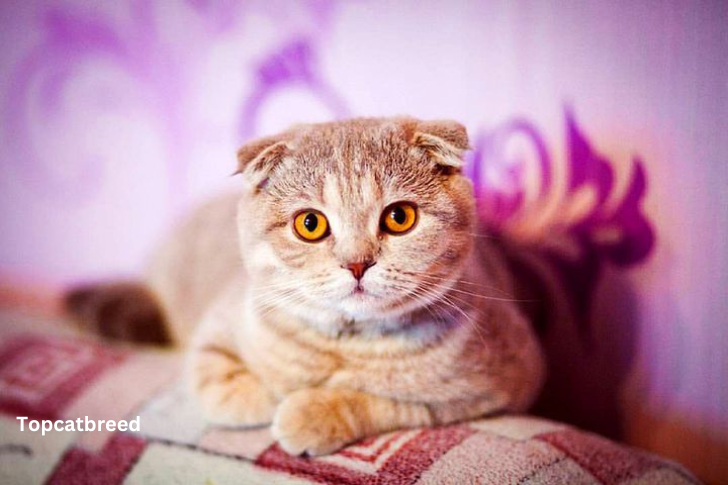
The Scottish Fold, originating in Scotland in the 1960s, gained fame for its unique folded ears, a result of a spontaneous mutation. Adored for its charming appearance and affectionate demeanor, the breed remains a delightful blend of history and charm. The unique folded ears of the Scottish Fold are a hereditary trait induced by a cartilage development abnormality. Scottish Fold cats are beloved for their unique folded ears and sweet temperament.
They are medium-sized cats that weigh 6 to 13 pounds and can live for 15 years or more. While they are not naturally aggressive, they can be assertive when defending their territory. The folded ear trait is caused by a genetic mutation, giving Scottish Fold cats a distinct appearance. Their gentle disposition often masks their territorial tendencies. When they feel their space is threatened, they may become assertive. Understanding this behavior and providing a structured environment can prevent any aggression from developing
Scottish Fold cats thrive in an atmosphere that respects their need for personal space and security. Ensuring they have a designated territory within the home and minimizing disruptions can help manage territorial tendencies. While they are not aggressive, they appreciate a calm and predictable environment that allows them to maintain their composure.
5. Abyssinian Cats
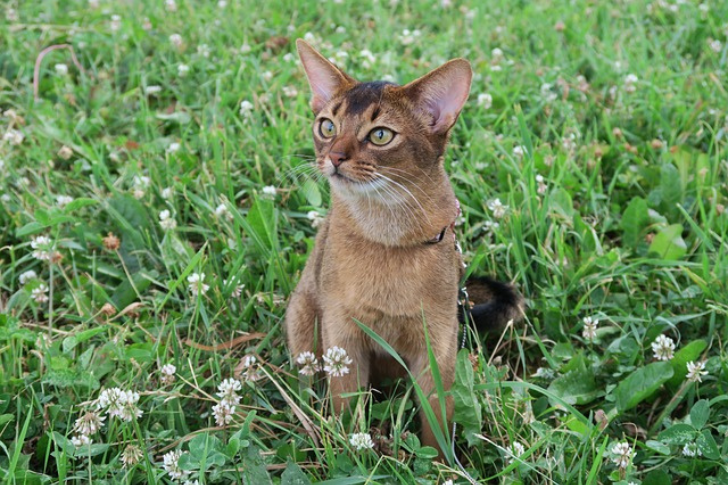
The Abyssinian cat, shrouded in the mystery of ancient times, is believed to trace its origins to the sacred temples of ancient Egypt. Its sleek coat and playful spirit echo a lineage steeped in enigmatic history, making the Abyssinian a living artifact of feline fascination. Abyssinian cats are known for being active and energetic. They are medium-sized cats that weigh 8 to 12 pounds and have a lifetime of 12 to 16 years. Their short, ticked coat and active disposition give them a wild appearance. While Abyssinians are not inherently aggressive, they can display assertiveness due to their high energy levels.
Abyssinians are one of the most active cat breeds, and their need for play and exploration can sometimes be misunderstood as territorial behavior. When their need for stimulation is not met, they might become more assertive. Owners can manage this behavior by providing plenty of interactive play and toys that challenge their minds.
Understanding their active nature and offering opportunities for exercise and play is key to preventing any potential aggression. Abyssinian cats thrive in a dynamic and engaging environment where they can release their energy in a positive way. Properly socialized Abyssinians can maintain a harmonious relationship with their owners. Maintaining a stimulating environment and ensuring they get enough exercise and playtime can help channel their energy and minimize any assertive behaviors.
6. Egyptian Mau Cats
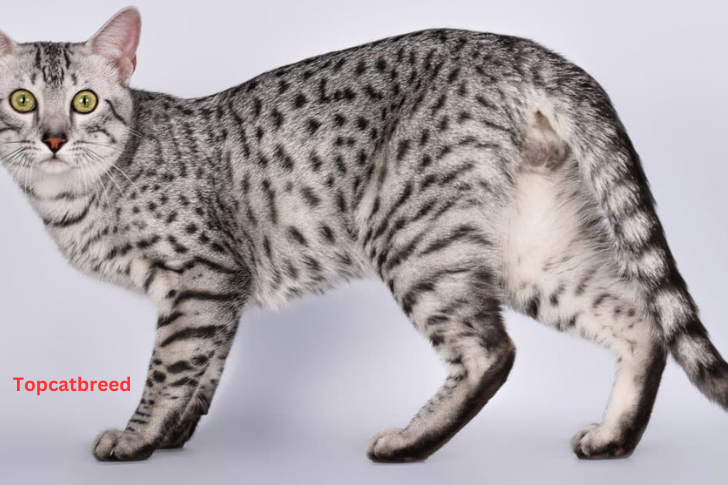
The Egyptian Mau, meaning “cat” in ancient Egyptian, boasts a regal history as sacred companions to pharaohs. Adorned with distinctive spots reminiscent of the wild, these cats echo an era where they were revered and immortalized in hieroglyphs. Today, the Egyptian Mau stands as a living link to the majestic legacy of feline royalty in ancient Egypt Egyptian Mau cats are known for their striking spotted coat and playful demeanor.
They are medium-sized cats, with males weighing 10 to 14 pounds and females weighing slightly less. frequently live for 15 years or more. These often live for 15 years or more. While not inherently aggressive, their assertiveness can be attributed to their protective instincts.
The Egyptian Mau’s spots and shimmering coat give them a unique and eye-catching appearance. They are known for their friendly and outgoing nature. Their territorial behavior may arise when they feel the need to protect their loved ones or their space. This assertiveness is not driven by aggression but by their instinct to ensure the safety and well-being of their home. Maintaining a harmonious relationship with an Egyptian Mau involves providing a secure and stimulating environment.
Understanding their protective tendencies and respecting their need for personal space and security can prevent any aggression from developing. Ensuring they have a designated territory within the home can also help manage territorial tendencies. Providing mental and physical stimulation through interactive play and engagement is essential to keep their assertive behaviors in check.
7. American Shorthair Cats
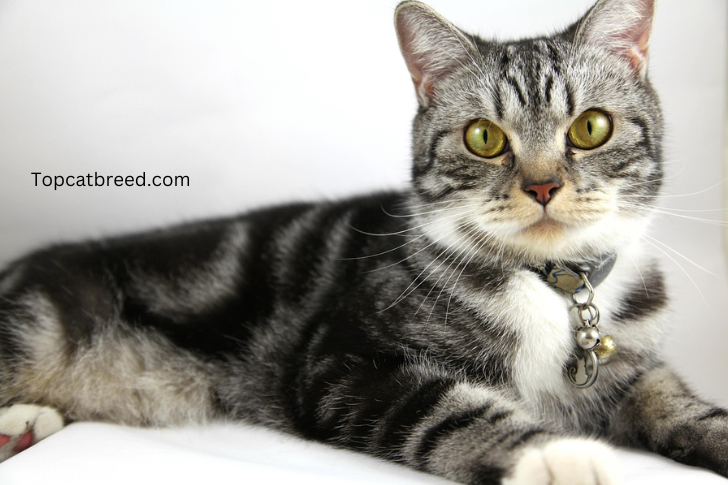
The American Shorthair, deeply entwined with the history of early American settlers, has transformed from skilled hunters to cherished companions. This versatile and easygoing breed has evolved over time, leaving its paw prints on the tapestry of American heritage.
Weighing between 11 to 15 pounds for males, and slightly less for females, American Shorthairs can thrive for 15 to 20 years with proper care. Beyond the basics, they appreciate environments that honor their independence. While not inherently aggressive, their assertiveness may surface when they feel their space is encroached upon. With a palette of colors and patterns, American Shorthairs are visual delights. Their calm and loving temperament makes them excellent companions, though this amiability may shift to assertiveness when territorial lines are crossed.
In the realm of feline companionship, the American Shorthair remains a symbol of adaptability and resilience. Understanding their history, meeting their living needs, and appreciating their nuanced temperament ensure a harmonious partnership with these versatile felines. Properly understanding their need for personal space and security is crucial in preventing any aggressive behavior
To maintain a harmonious relationship with American Shorthairs, it’s important to create an environment that respects their need for personal space. Minimizing disruptions and providing a calm and predictable atmosphere can help them maintain their composure. Understanding their unique traits and behaviors can go a long way in preventing any potential assertive tendencies from escalating into aggression.
8-Sphynx Cats
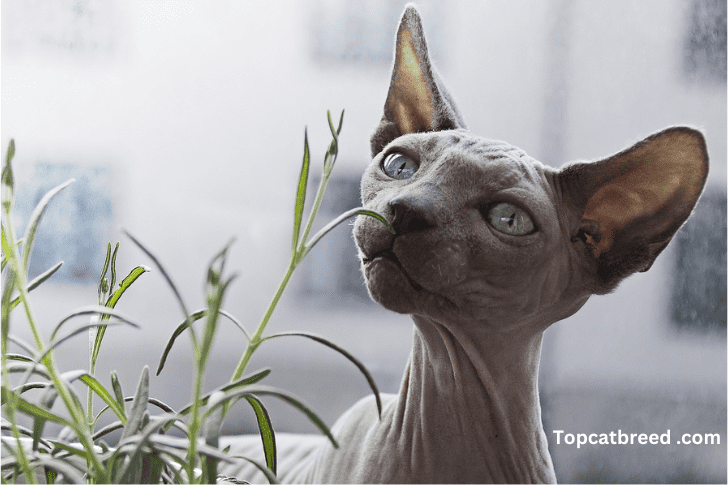
The fascinating Sphynx cat, with its seemingly ancient aesthetic, has a surprisingly recent origin, evolving through selective breeding in Canada during the 1960s. Weighing a moderate 6 to 12 pounds, these medium-sized cats carry a lifespan ranging from 8 to 14 years. What sets the Sphynx apart is not just its intriguing history but its unique physical features – nearly hairless, with distinctive wrinkled skin and prominent cheekbones, all resulting from a genetic anomaly.
Living with a Sphynx cat requires special attention to their need for warmth, given their lack of fur. Regular bathing is essential to remove skin oils that accumulate. Despite their hairless appearance, Sphynx cats exhibit a spectrum of colors and patterns, including solid, mink, and pointed varieties.
What truly makes the Sphynx shine is its highly social and affectionate disposition. These cats thrive on human interaction, earning them the label of being “dog-like” due to their loyalty and tendency to shadow their humans around the house.
Found in various hues and patterns, the Sphynx cat has become a sought-after companion globally. Most aggressive cat breeds. Their striking appearance, coupled with an outgoing personality, makes them a captivating choice for cat enthusiasts seeking a unique and affectionate feline friend. The Sphynx, with its distinctive look and engaging temperament, stands as a testament to the intriguing diversity within the world of cats.
FAQS
1-Are all Siamese cats aggressive?
No, Siamese cats aren’t inherently aggressive cat, but they can be assertive if their needs for attention and play aren’t met. Proper socialization and stimulation can help.
2-Do Maine Coon cats get aggressive due to their size?
Maine Coon cats are not aggressive cat due to their size. They can be assertive in protecting their territory or loved ones. Socialization and a structured environment help manage this.
3: Are all Egyptian Mau cats territorial?
Egyptian Mau cats have protective instincts but aren’t inherently territorial. They may exhibit assertiveness when safeguarding their space or loved ones. Proper understanding and a secure environment help.
4: Are American Shorthair cats naturally aggressive?
American Shorthair cats are not naturally aggressive cat. They can be assertive when their space is invaded. Understanding their need for personal space helps prevent aggression.
5: Do Sphynx cats become aggressive due to their need for attention?
Sphynx cats are not naturally aggressive. They can become assertive when seeking attention and warmth. Providing social interaction and cozy comforts helps maintain a loving relationship
Conclusion
In conclusion, understanding the assertive and territorial traits in most aggressive cat breeds is key to fostering strong bonds. These behaviors, often misunderstood as aggression, stem from genetics and unique personalities. Managing them involves thoughtful strategies like proper socialization and meeting their needs. most aggressive cat breeds. By respecting each breed’s distinct traits, cat owners create environments where assertive or territorial cats thrive without undue stress.
